Ragdoll Cat
- February 16, 2024
- 0 comment
Ragdoll cats are renowned for their striking beauty and gentle demeanor, making them beloved companions in households around the world. Originating in California in the 1960s, Ragdolls were selectively bred for their unique combination of large size, semi-long fur, and docile temperament. The breed’s name stems from their tendency to relax and go limp when picked up, resembling a child’s ragdoll toy.
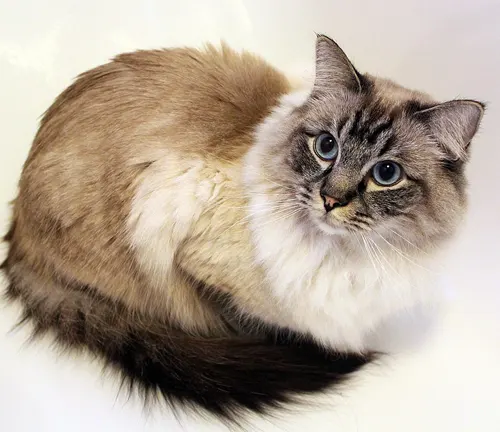
With their captivating blue eyes, plush fur, and affectionate nature, Ragdolls quickly gained popularity among cat enthusiasts. They are known for their laid-back personality, often following their owners from room to room and eagerly seeking affection. Despite their regal appearance, Ragdolls are sociable and adaptable, forming strong bonds with their human companions and getting along well with children and other pets. Their low-maintenance grooming needs and easygoing nature make them ideal companions for both novice and experienced cat owners alike.
Whether lounging on the couch or playing with interactive toys, Ragdolls bring joy and companionship to any household, earning their place as one of the most beloved breeds in the feline world.
| Specifications | Description |
|---|---|
| Size | Large |
| Weight | Males: 15-20 pounds; Females: 10-15 pounds |
| Coat Length | Semi-long |
| Coat Texture | Soft and plush |
| Coat Colors | Various, including seal, blue, chocolate, lilac, flame, cream, and more |
| Eye Color | Blue |
| Body Type | Muscular and sturdy |
| Temperament | Gentle, affectionate, and laid-back |
| Lifespan | 12-17 years |
| Grooming Needs | Low maintenance |
| Activity Level | Moderate |
| Sociability | Highly social, enjoys human companionship |
| Compatibility | Gets along well with children and other pets |
| Special Features | Tendency to go limp when picked up; docile demeanor |
Ragdoll Cat: A Gentle Giant in the Feline World
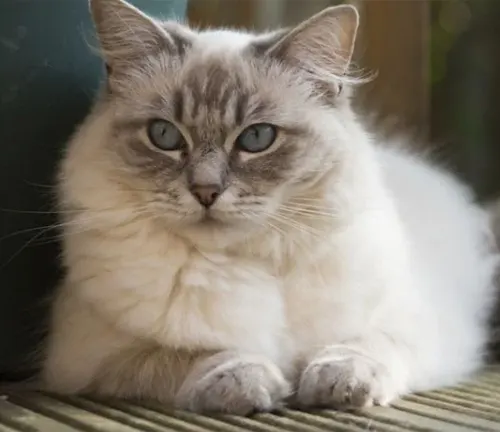
Ragdoll cats are beloved for their striking blue eyes, luxurious semi-long fur, and affectionate nature. Originating from California in the 1960s, these large, docile cats have captured the hearts of cat enthusiasts worldwide. Whether you’re a seasoned cat owner or considering adding a furry companion to your family, understanding the unique characteristics of Ragdoll cats is essential.
Origin and History
Originating in California, United States, in the 1960s, the Ragdoll cat breed has a fascinating and relatively recent history. The breed’s story begins with a white Persian-Angora mix named Josephine, who lived with breeder Ann Baker in Riverside, California. Josephine possessed unique traits, including a gentle temperament and tendency to go limp when picked up, which inspired Baker to embark on a breeding program to develop the Ragdoll breed. Through careful selection and breeding, Baker created a distinct lineage of cats known for their large size, semi-long fur, striking blue eyes, and docile disposition. The breed’s name, “Ragdoll,” reflects their tendency to relax and go limp like a child’s ragdoll toy when held. Over time, Ragdoll cats gained popularity for their exceptional beauty and affectionate nature, becoming cherished companions in households worldwide. Today, the Ragdoll breed continues to captivate cat lovers with its unique charm and gentle demeanor, carrying forward a legacy rooted in the love and dedication of its early breeders

Physical Characteristics
Ragdoll cats are renowned for their distinctive physical characteristics, which contribute to their unique charm and appeal. Here are some key features of the Ragdoll breed:

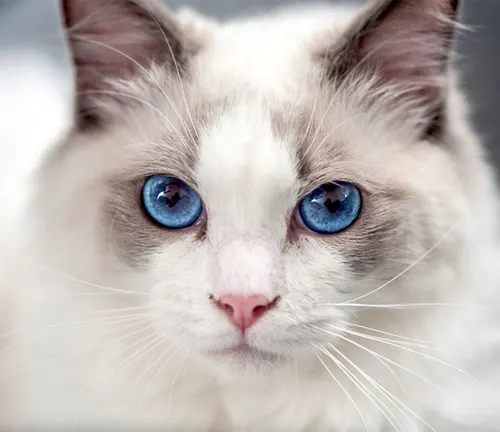
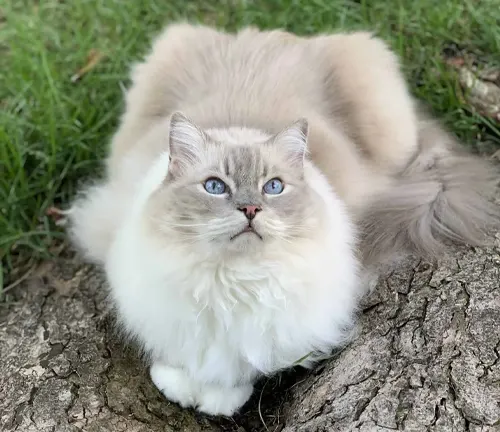
- Size: Ragdolls are known for their large size, with males typically weighing between 15 to 20 pounds and females ranging from 10 to 15 pounds. They have a sturdy and muscular build, giving them a substantial presence.
- Coat Length: Ragdolls have semi-long fur that is soft, plush, and luxurious to the touch. Their fur is not prone to matting, making grooming relatively easy compared to some other long-haired breeds.
- Coat Colors: Ragdolls come in a variety of coat colors and patterns, including seal, blue, chocolate, lilac, flame, cream, and more. These colors can appear in different patterns such as colorpoint, mitted, and bicolor.
- Eye Color: One of the most striking features of Ragdoll cats is their mesmerizing blue eyes. Their eyes are typically oval-shaped and deep blue in color, adding to their enchanting appearance.
- Body Type: Ragdolls have a well-proportioned body with a broad chest, sturdy legs, and a medium-length tail. Despite their large size, they move with grace and elegance, reflecting their regal nature.
- Facial Features: Ragdolls have a sweet and gentle expression with a slightly rounded head, full cheeks, and a medium-sized nose. Their ears are medium-sized and rounded at the tips, adding to their overall adorableness.
- Temperament: While not a physical characteristic, Ragdolls are known for their docile and affectionate nature. They are often described as “gentle giants” due to their laid-back demeanor and tendency to enjoy cuddling and being held.
Temperament and Personality
Ragdoll cats are renowned for their gentle and affectionate temperament, making them cherished companions in households around the world. Here are some key aspects of their personality:
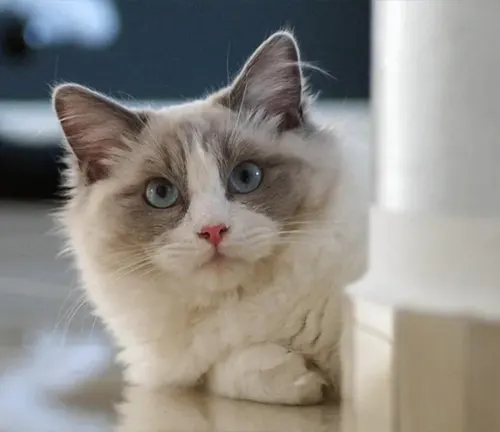

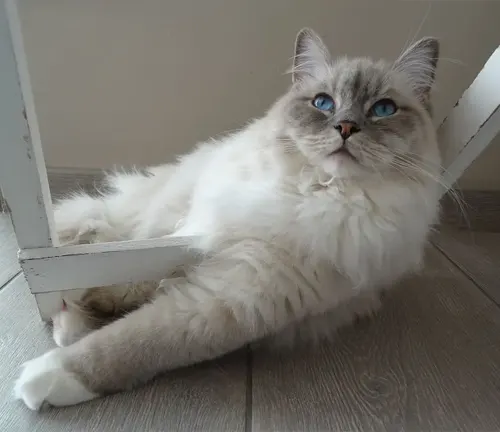
- Affectionate: Ragdolls are known for their deep affection towards their human companions. They often seek out cuddles and enjoy being close to their owners, whether lounging on the couch or snuggling in bed.
- Laid-back: Ragdolls have a calm and relaxed demeanor, earning them the nickname “gentle giants.” They are not prone to sudden bursts of energy or hyperactivity and tend to approach life with a mellow attitude.
- Social: Ragdolls are highly sociable cats that thrive on human interaction. They enjoy being part of the family and often follow their owners from room to room, eager to be involved in household activities.
- Docile: One of the most distinctive traits of Ragdoll cats is their tendency to go limp when picked up, resembling a child’s ragdoll toy. This docile behavior makes them easy to handle and endears them to people of all ages.
- Adaptable: Ragdolls are adaptable cats that can adjust well to various living environments, including apartments or homes with children and other pets. They are not easily stressed and can acclimate to changes in routine or surroundings.
- Intelligent: Despite their laid-back demeanor, Ragdoll cats are intelligent and trainable. They can learn basic commands and enjoy interactive play sessions that stimulate their minds and keep them engaged.
- Vocal: While not as vocal as some other breeds, Ragdolls are not completely silent either. They may express themselves through soft chirps, trills, or meows, especially when seeking attention or communicating their needs.
Care and Maintenance
Despite their long fur, Ragdoll cats have relatively low grooming needs. Regular brushing to prevent matting and the occasional bath are usually sufficient to keep their coat in good condition. Additionally, maintaining a healthy diet and providing regular veterinary check-ups are essential for their overall well-being.
Regular Veterinary Check-ups
Regular veterinary check-ups are crucial for maintaining your Ragdoll cat’s health and well-being. These check-ups allow the vet to assess your cat’s overall health, detect any potential health issues early on, and provide preventive care such as vaccinations and parasite control. By staying proactive with veterinary care, you can ensure that your Ragdoll remains healthy and happy throughout their life.
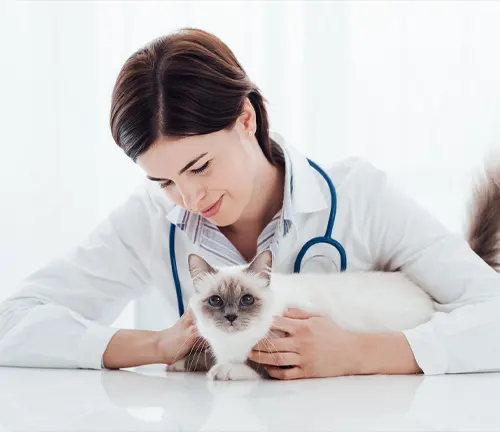
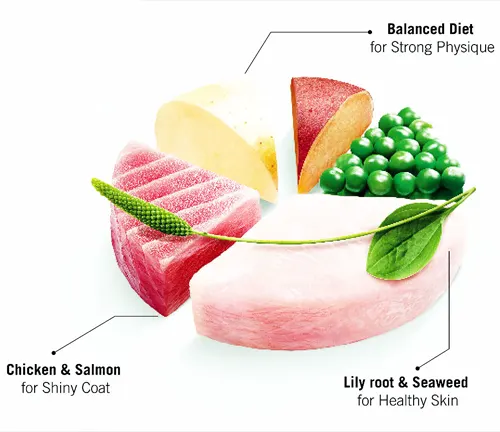
Balanced Diet
Providing your Ragdoll cat with a balanced diet is essential for their overall health and vitality. A diet that is appropriate for their age, weight, and activity level ensures that they receive the necessary nutrients to support their growth, energy levels, and immune function. High-quality commercial cat food, supplemented with occasional treats, helps maintain optimal health and prevents nutritional deficiencies or excesses. Additionally, proper hydration is vital, so always ensure your Ragdoll has access to fresh, clean water.
Grooming and Hygiene
Regular grooming and hygiene maintenance are important aspects of caring for a Ragdoll cat. Despite their semi-long fur, Ragdolls have relatively low grooming needs compared to some other long-haired breeds. Regular brushing helps remove loose hair, prevent matting, and distribute natural oils throughout the coat, keeping it healthy and shiny. Additionally, trimming nails, cleaning ears, and brushing teeth are essential for maintaining good hygiene and preventing dental issues and ear infections. By incorporating grooming into your Ragdoll’s routine, you can keep them looking and feeling their best while minimizing the risk of health problems.
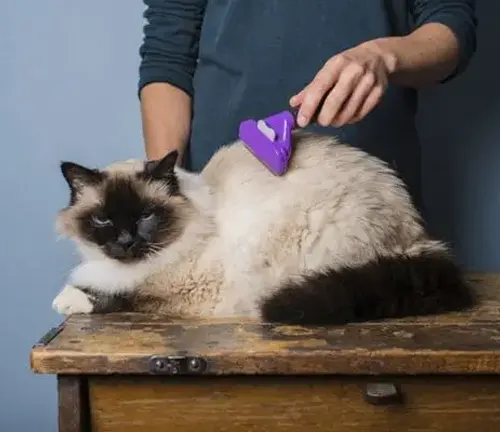
Feeding Guidelines
Ragdoll cats require a balanced diet rich in protein and nutrients to maintain their health and vitality. High-quality commercial cat food, whether dry or wet, is recommended to meet their dietary needs. It’s important to monitor their food intake and avoid overfeeding to prevent obesity, which can lead to various health issues.
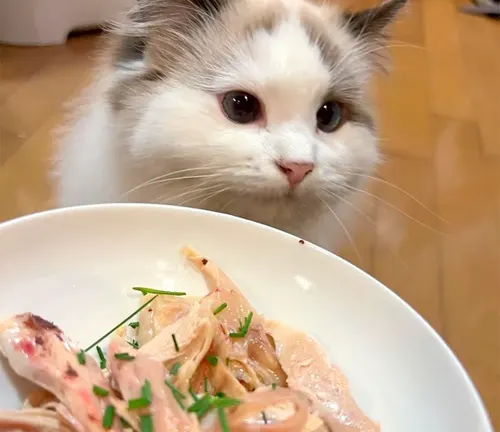
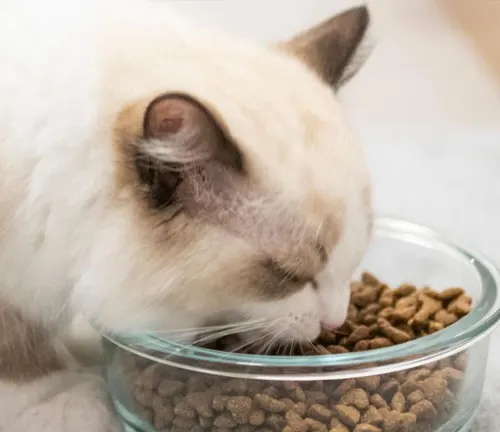
- High-Quality Cat Food:
- Choose a high-quality commercial cat food that is formulated to meet the nutritional needs of adult Ragdoll cats. Look for a food that lists a high-quality protein source, such as chicken, turkey, or fish, as the first ingredient. Avoid foods that contain fillers, artificial additives, or excessive amounts of carbohydrates.
- Choose a high-quality commercial cat food that is formulated to meet the nutritional needs of adult Ragdoll cats. Look for a food that lists a high-quality protein source, such as chicken, turkey, or fish, as the first ingredient. Avoid foods that contain fillers, artificial additives, or excessive amounts of carbohydrates.
- Proper Portion Control:
- Determine the appropriate portion size for your Ragdoll cat based on factors such as their age, weight, activity level, and metabolic rate. Overfeeding can lead to obesity and related health issues, so it’s important to measure out your cat’s food portions carefully and avoid free-feeding. Your veterinarian can provide guidance on portion sizes and feeding frequency based on your cat’s individual needs.
- Determine the appropriate portion size for your Ragdoll cat based on factors such as their age, weight, activity level, and metabolic rate. Overfeeding can lead to obesity and related health issues, so it’s important to measure out your cat’s food portions carefully and avoid free-feeding. Your veterinarian can provide guidance on portion sizes and feeding frequency based on your cat’s individual needs.
- Scheduled Meal Times:
- Establish a regular feeding schedule with set meal times to provide structure and routine for your Ragdoll cat. Consistency is key to preventing overeating and maintaining a healthy weight. Aim to feed your cat at least two to three times per day, spaced evenly throughout the day, to help regulate their metabolism and prevent hunger-related behavior.
- Establish a regular feeding schedule with set meal times to provide structure and routine for your Ragdoll cat. Consistency is key to preventing overeating and maintaining a healthy weight. Aim to feed your cat at least two to three times per day, spaced evenly throughout the day, to help regulate their metabolism and prevent hunger-related behavior.
- Hydration:
- Ensure that your Ragdoll cat has access to fresh, clean water at all times to support proper hydration and kidney function. Consider using a water fountain to encourage drinking, especially if your cat is reluctant to drink from a bowl. Wet food can also contribute to your cat’s overall hydration, so incorporating some wet food into their diet can be beneficial.
- Ensure that your Ragdoll cat has access to fresh, clean water at all times to support proper hydration and kidney function. Consider using a water fountain to encourage drinking, especially if your cat is reluctant to drink from a bowl. Wet food can also contribute to your cat’s overall hydration, so incorporating some wet food into their diet can be beneficial.
- Special Dietary Needs:
- Consider any special dietary needs or health conditions that may affect your Ragdoll cat’s diet. For example, senior cats may benefit from a diet formulated for older cats with added joint support and fewer calories to prevent weight gain. Cats with specific health issues may require specialized diets prescribed by a veterinarian.
Exercise Requirements
Despite their relaxed demeanor, Ragdoll cats benefit from regular play and exercise to maintain a healthy weight and mental stimulation. Interactive toys, scratching posts, and play sessions with their owners are great ways to keep them active and engaged.
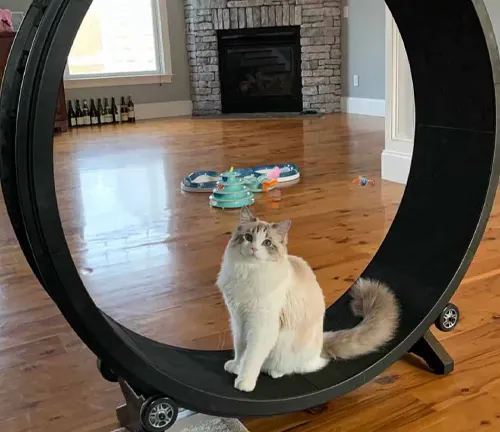
- Interactive Play Sessions:
- Ragdoll cats benefit from regular interactive play sessions to help keep them physically active and mentally stimulated. Engage your Ragdoll in play with toys such as feather wands, laser pointers, or interactive puzzle toys that encourage them to chase, pounce, and use their natural hunting instincts. Aim for at least two to three 15-minute play sessions per day to provide adequate exercise and prevent boredom.
- Ragdoll cats benefit from regular interactive play sessions to help keep them physically active and mentally stimulated. Engage your Ragdoll in play with toys such as feather wands, laser pointers, or interactive puzzle toys that encourage them to chase, pounce, and use their natural hunting instincts. Aim for at least two to three 15-minute play sessions per day to provide adequate exercise and prevent boredom.
- Vertical Exploration:
- Ragdolls enjoy climbing and exploring their environment, so providing vertical spaces for them to climb and perch can fulfill their natural instincts and provide physical activity. Invest in cat trees, shelves, or window perches that allow your Ragdoll to climb and survey their surroundings. Vertical spaces not only provide exercise but also offer mental stimulation and enrichment for your cat.
- Ragdolls enjoy climbing and exploring their environment, so providing vertical spaces for them to climb and perch can fulfill their natural instincts and provide physical activity. Invest in cat trees, shelves, or window perches that allow your Ragdoll to climb and survey their surroundings. Vertical spaces not only provide exercise but also offer mental stimulation and enrichment for your cat.
- Encourage Active Play:
- Encourage your Ragdoll cat to engage in active play throughout the day by providing toys and activities that stimulate their curiosity and energy. Rotate toys regularly to keep them interesting and offer variety, such as wand toys, balls, or catnip-filled toys. You can also create obstacle courses or hide treats around the house to encourage your Ragdoll to explore and move around.
Different Species
Seal Point
These Ragdolls have a cream-colored body with dark brown points on their ears, face, paws, and tail.
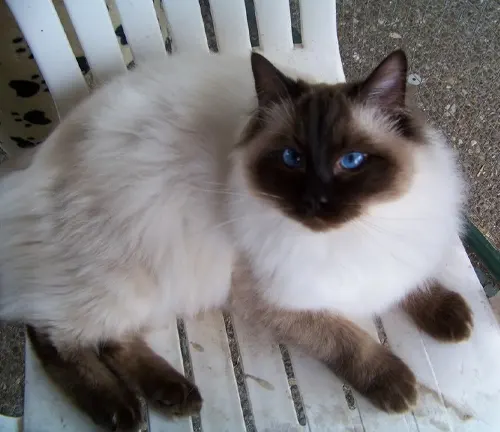
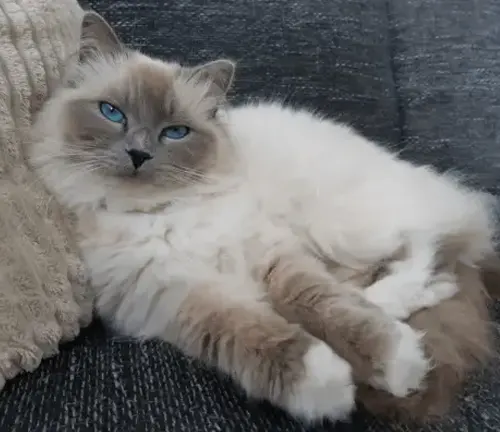
Blue Point
Blue Point Ragdolls have a bluish-gray body with darker gray points on their ears, face, paws, and tail.
Chocolate Point
Chocolate Point Ragdolls have a light brown body with darker brown points on their ears, face, paws, and tail.

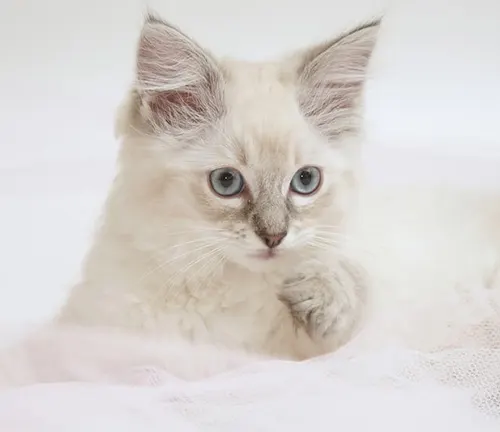
Lilac Point
Lilac Point Ragdolls have a pale, silvery-gray body with pinkish-gray points on their ears, face, paws, and tail.
Flame Point
Flame Point Ragdolls have a creamy white body with reddish-orange points on their ears, face, paws, and tail.
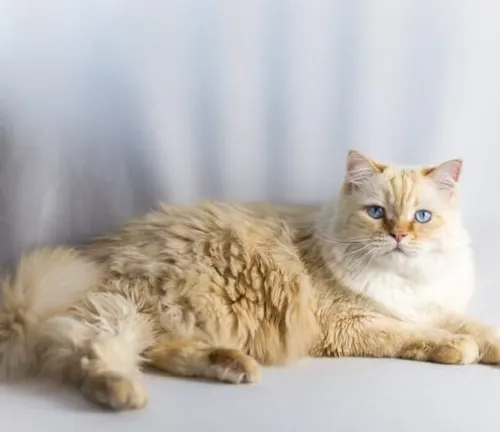
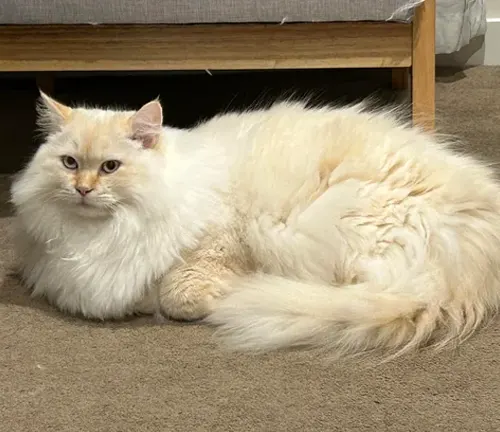
Cream Point
Cream Point: Cream Point Ragdolls have a creamy white body with lighter cream-colored points on their ears, face, paws, and tail.
Frequently Asked Question (FAQs)
- What is a Ragdoll cat?
This question seeks a basic understanding of the breed’s characteristics and origins. - Are Ragdoll cats hypoallergenic?
Many people wonder if Ragdolls produce less allergens than other cat breeds. - How big do Ragdoll cats get?
This question aims to understand the average size of Ragdoll cats, especially for those considering adopting one. - Are Ragdoll cats good with children?
Prospective owners often inquire about the breed’s suitability for households with kids. - Do Ragdoll cats shed a lot?
Shedding can be a concern for some people, so they want to know about the grooming needs of Ragdoll cats. - How long do Ragdoll cats live?
This question addresses the lifespan of Ragdolls, which is important for long-term pet care planning. - Do Ragdoll cats require a lot of grooming?
Understanding grooming requirements helps potential owners prepare for the responsibilities of cat care. - Are Ragdoll cats expensive?
Cost is a significant factor for many considering a Ragdoll cat, so they may inquire about breeders’ prices and adoption fees. - Do Ragdoll cats have any specific health concerns?
Prospective owners want to know about potential health issues associated with the breed. - Are Ragdoll cats vocal?
Some people are curious about the vocal tendencies of Ragdoll cats, particularly if they prefer quieter pets. - Are Ragdoll cats indoor or outdoor cats?
This question addresses whether Ragdolls should be kept strictly indoors or allowed outdoor access. - Do Ragdoll cats get along with other pets?
Families with existing pets may inquire about Ragdolls’ compatibility with other animals in the household. - Are Ragdoll cats high maintenance?
This question seeks to understand the overall level of care and attention required to keep a Ragdoll cat happy and healthy. - Are Ragdoll cats prone to specific behavioral issues?
Understanding potential behavioral challenges helps owners address and manage them effectively.









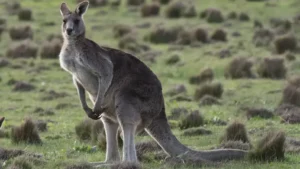




Leave your comment